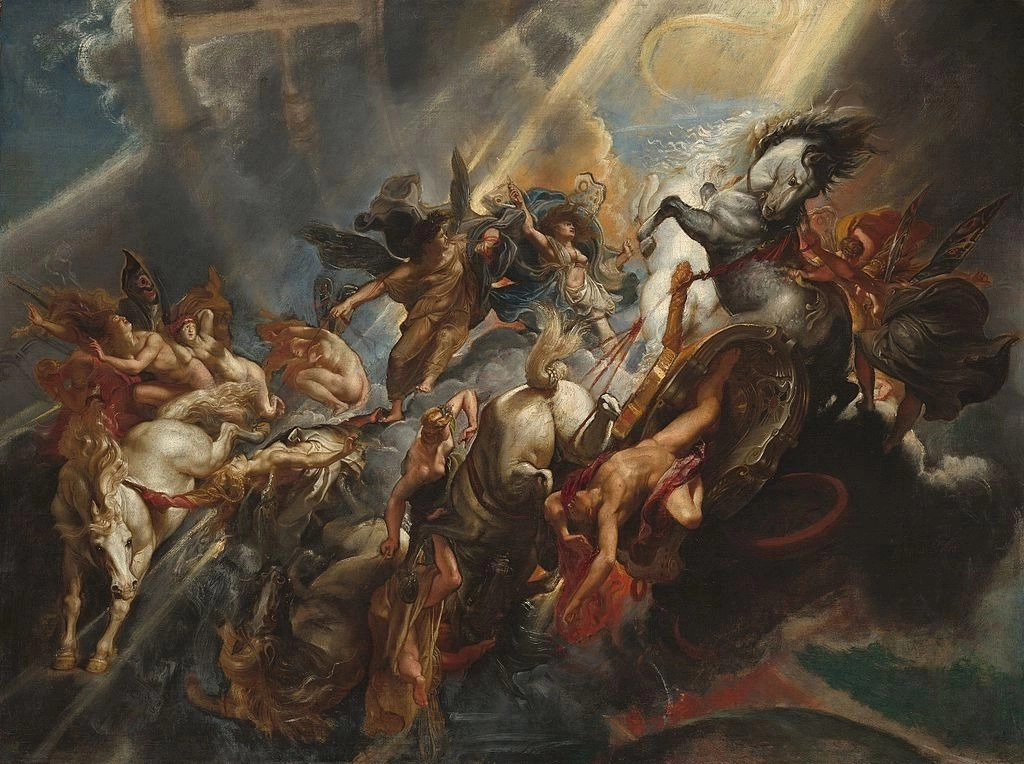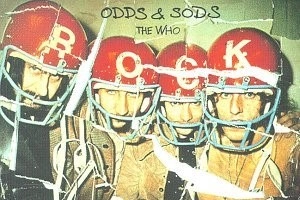Anyone who has ever ridden a horse in a gallop will confirm how difficult it is to stay on its back. In a track race, a galloping horse can run at a speed of up to 60 kilometres per hour. The speed of a horse is fascinating and intoxicating, but also treacherous. It carries with it the potential risk of falling. The themes associated with horse riding have attracted the attention of visual artists for centuries. In what ways are these themes so inspiring?
In ancient European myths as well as in Christian Gospels, we often encounter allegorical images of the fall in connection with horse riding, which on a symbolic level reveal shortcomings or transgressions in human behaviour and thus draw attention to the existential situatedness of humanity in the wider context of the world order. Explicit iconographic themes of a fall from a horse, or rather from a horse-drawn cart, are found in the numerous artistic treatments of the Greek myth of the young man Phaethon, which are part of Ovid's classic work The Metamorphoses. For example, in a painting by the Flemish painter Peter Paul Rubens entitled The Fall of Phaethon (1604-1605), we see a dramatic scene of Phaethon's fall, which is the culmination of the young man's immense pride. According to the mythical narrative, Phaethon was the son of the sun god Helios, who boasted of his divine origins to the point where he was challenged by his companions to prove them. Phaethon asked his father Helios to lend him a horse-drawn chariot. Helios was reluctant at first but eventually lent the sun chariot to his son. This act, however, could not go unpunished by the gods. The horses began to resist until they threatened to tear down the heavens. As punishment, Zeus sent a thunderbolt at Phaethon, which, according to the story, threw him down into the mythical river Eridanus.
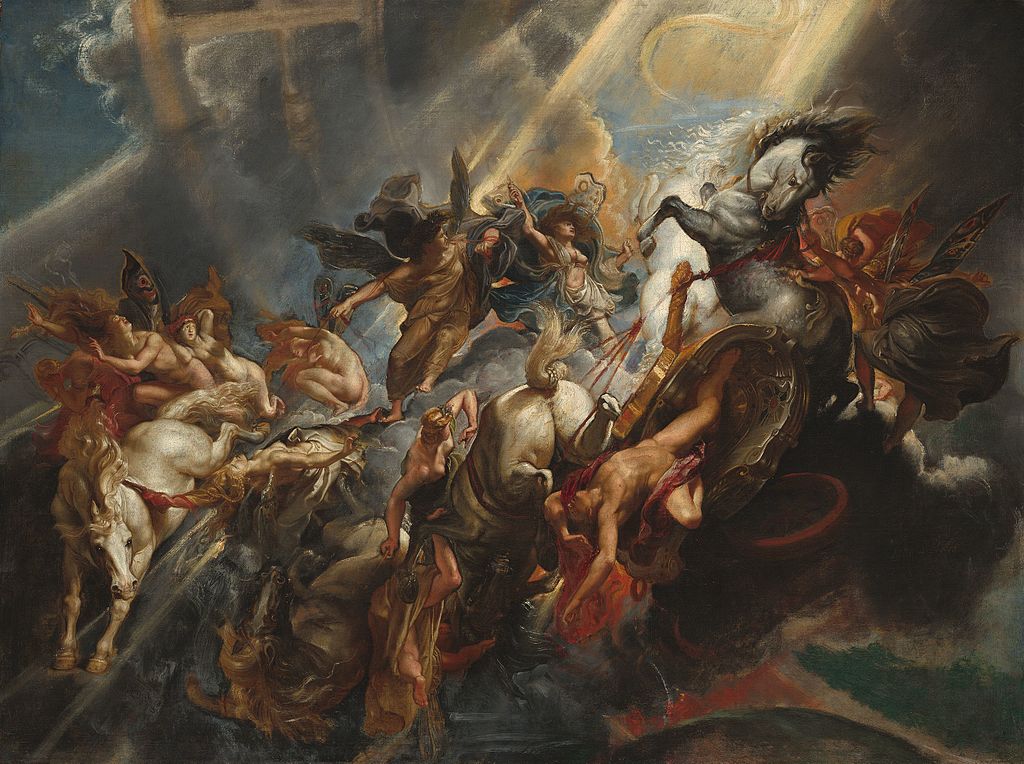
In Christian iconography, the motif of riding a horse acquires symbolic meaning in connection with the end of the old world and the coming of a new age. Among Albrecht Dürer's illustrations for the Apocalypse of 1498 is a graphic sheet entitled The Four Horsemen of the Apocalypse. The sketch shows riders on horseback bringing sickness, war, misery and death to humanity. In order not to mislead the reader, it should be added that the symbolic content associated in our cultural circle with the motif of the horse is very varied. The horse is a symbol of divine fertility, renewal of life force, wisdom and sensibility. It symbolises loyalty and faith in the future. It also figures as a guide for the souls of the dead.
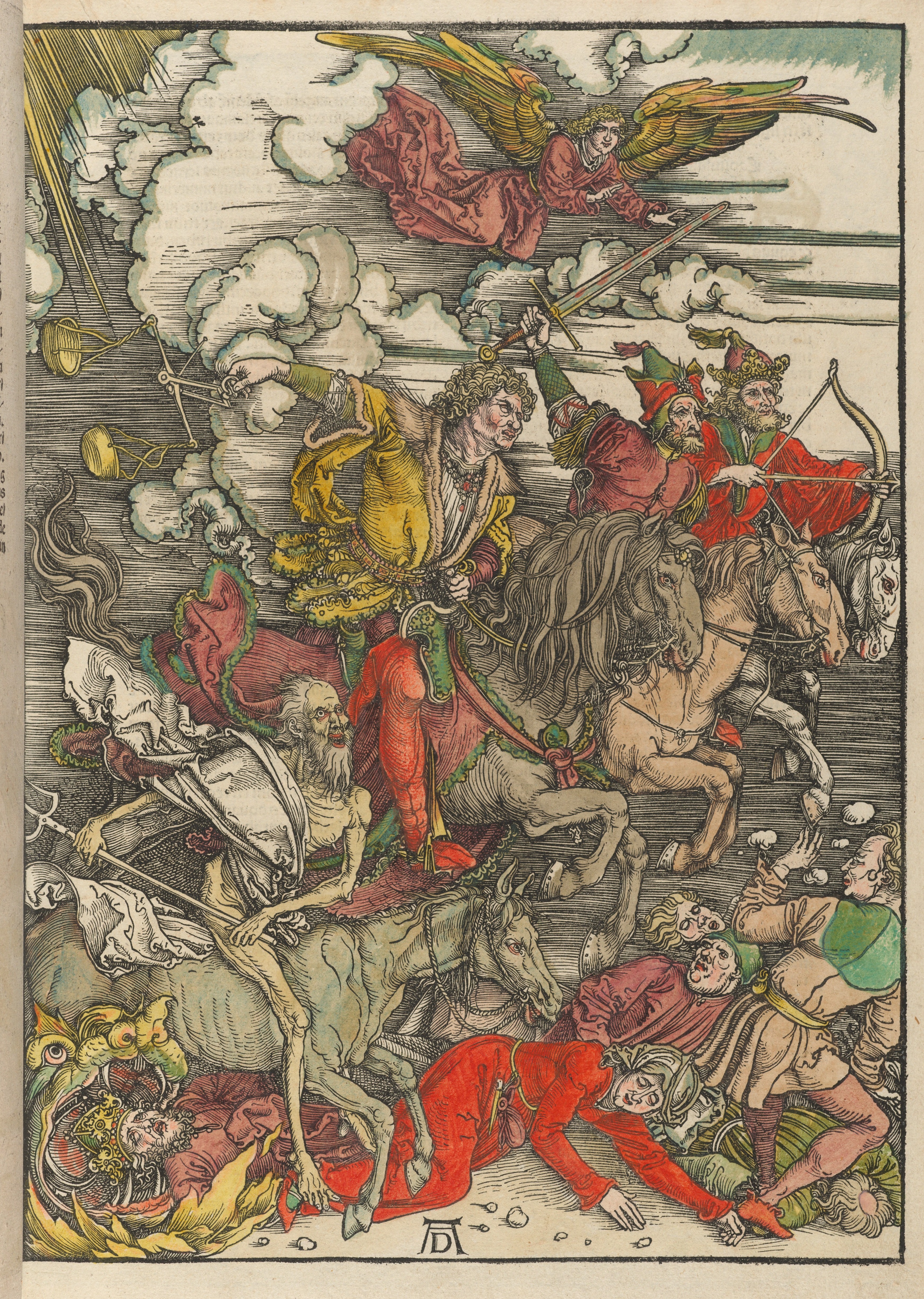
If we diverge from the context of religious allegories, the subject of horse riding opens up from the very position of those who rode horses and had a special relationship with them. For knights and soldiers, the horse was a close companion, a friend on whom they relied in times of need - certainly not a mere means of transport or combat. Learning to ride a horse was one of the basic skills of young men from royal families and aristocratic circles. It was a virtue, the acquisition of which made an immature young man a grown man. Combined with falconry and hunting, horse riding represents a specific art in the social context of the aristocracy. The young man must display not only physical agility and endurance but also the capacity for mental balance and patience. A special test of courage was to mount a young horse that had not yet been ridden. This experience is already archaic: it was part of the rites of passage of the so-called 'indigenous peoples'. It is interesting to note that equestrian art was included in the system of fine arts that took shape during the 17th and 18th centuries. The notion of riding as a sport did not begin to take hold until the 19th century, when the term sport began to be used to refer to a separate area of human practice.
At this time, the first truly modern race tracks were being built in European capitals, where races were held with a precisely refined system of rules. In France, for example, race tracks were built at Chantilly, Longchamps and Auteuil. Henri Toulouse-Lautrec, a painter, cartoonist and caricaturist who came from the ranks of the French aristocracy and might have grown up to be a successful horse racer if it had not been for a congenital growth defect, attended the races with his father. Lautrec loved horses, and before the disease became fully apparent in his teens, he spent almost all of his free time riding. In addition, he drew and painted - very often horses. He produced many remarkable sketches, not only of horse races but also of circus environments, depicting performers on horseback. The intense passion with which he drew and painted his favourite subjects is, without exaggeration, a manifestation of psychological compensation for a certain loss - the impossibility of continuing to pursue horsemanship due to advancing illness. He, too, experienced his downfalls, both literal and metaphorical, but despite these losses, he emerged all the stronger as an artist and as a human being. His artistic strengths undoubtedly include a unique ability to focus on detailed depictions of human and animal physiognomy, going to the point of extremely intelligent caricature. Lautrec was able to connect emotionally with his subjects and capture the individual characteristics of both humans and animals.
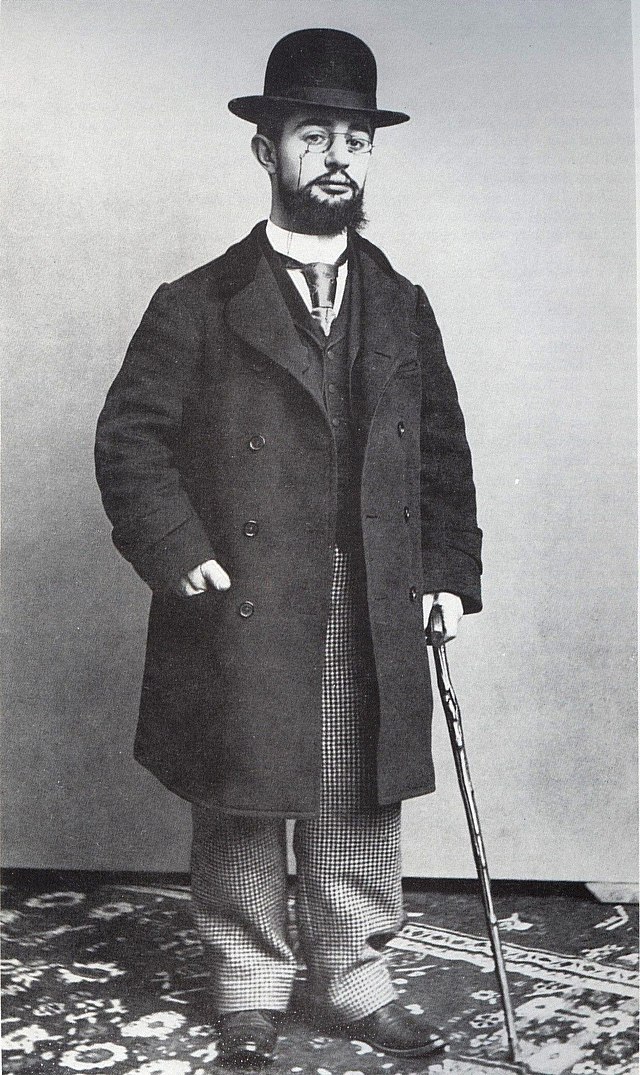
.jpg)
.jpg)
Scenes from the racing environment, the excitement of the racers before the start and dramatic depictions of the races were recorded with the conviction of an almost documentary approach by Lautrec's older contemporary, the French artist Edgar Degas. Degas's painting "Scene from the Steeplechase" (The Fallen Jockey) depicts the dramatic situation following a fall from a racehorse. The hind legs of the animal almost touch the head of the jockey lying helplessly on the ground. Degas constructed the image’s plot impressively. In this case, he was certainly not just after a superficial depiction of a fall. The artist's sketch studies for the painting have survived, and in them, we may notice the detailed expression on the jockey's face.
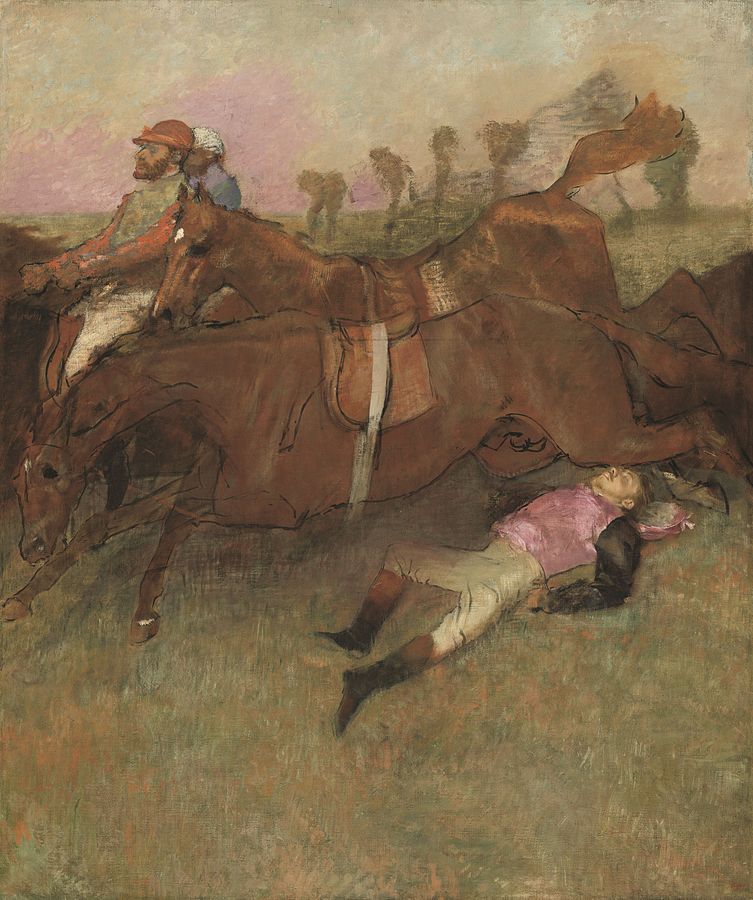

The motif of falling from a fast-moving horse was explored in the painting enigmatically titled "Natten" (Night) by the contemporary Danish artist of Israeli origin Tal R. The artist prepared this large-format painting measuring 3.49 x 7.77 meters for an exhibition at the Magazin III Jaffa gallery in his hometown of Tel Aviv in 2019. It was called Men Who Can't Sit on Horses. In an interview for the online magazine Artfridge, the artist explained that he tried to fulfil the curator's brief: to create a painting of the exact dimensions of Picasso's Guernica. The artist was inspired by the motif of the horse, which he wanted to have at the centre of the painting. However, he did not follow in the narrow footsteps of the symbolism of Picasso's work. In the painting "Night", we see a disparate, chaotic jumble of animal bodies and the riders falling from them, riding through the darkness. Tal R says: "All of the riders face the dilemma of crossing the river. The horses are doing quite well, but the riders are falling badly. The horses will just keep running. This comic is funny and tragic, a bittersweet fall." Tal R gives the viewer helpful clues to understand the painting as a hyperbolic exposition of his small everyday dramas: “Life has not one drama. Every day has a little drama.” And, as the artist adds, the important thing is to try to gradually overcome a certain point, that "point in the middle". Let me conclude by saying that this is a sympathetic, anti-heroic challenge to the everyday, directed against all the pathos of life's seriousness, which concerns each of us.
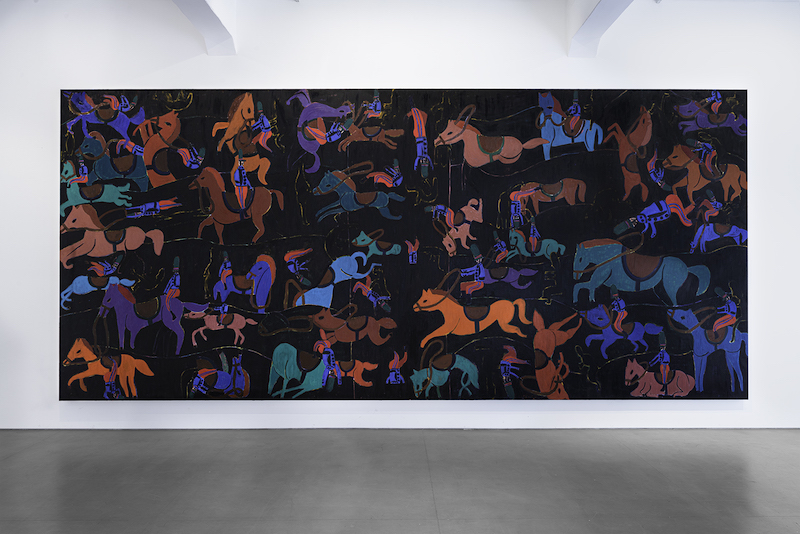
.jpg)
.jpg)
What does the artist's representation of racehorses look like? Take a look at this article.
